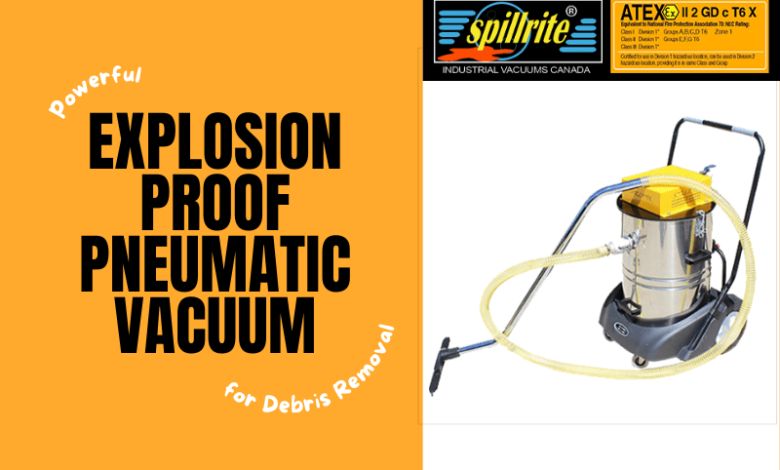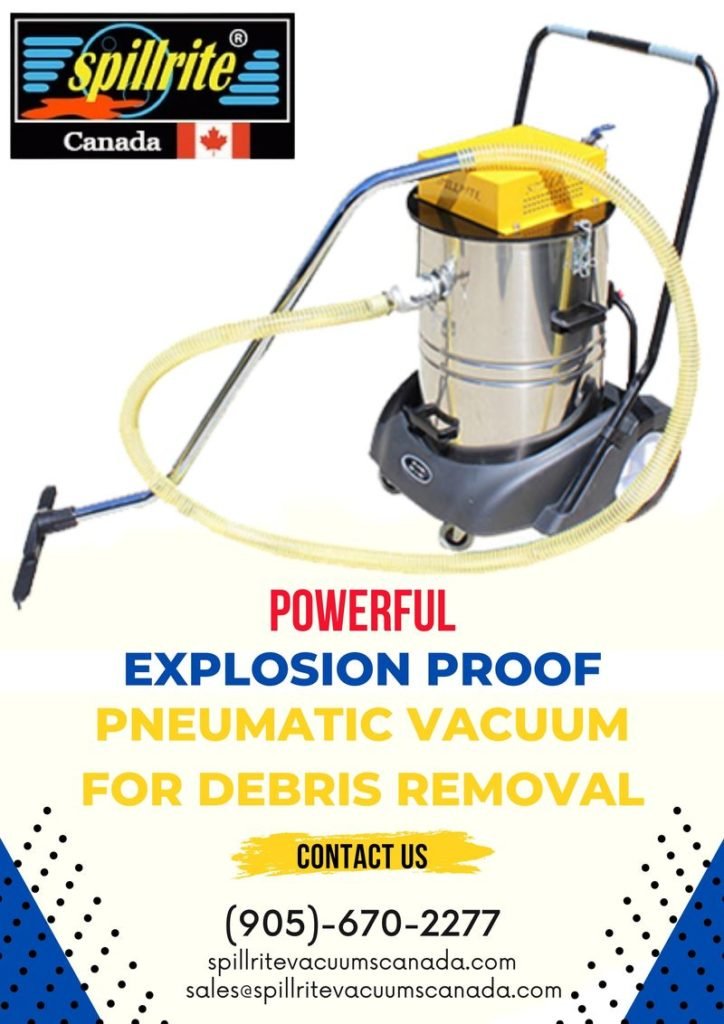Powerful Explosion Proof Pneumatic Vacuum for Debris Removal

Keeping your factory liberated from flammable residue is a lot more difficult than one might expect. Customary plant maintenance techniques like clearing and blowing down with packed air just exacerbate things by spreading the burnable residue around and making it airborne. It also poses problems in debris removal and doesn’t offer complete cleaning. This really builds your possibilities of an combustible dust explosion. That is the reason specific modern vacuums are presently commonly acknowledged as the most ideal way to battle burnable residue and other dangerous materials.
Much of the time these vacuums – with electric engines and metal parts – could deliver a perilous spark. Basically, with regards to safe plant disinfection, a simple vacuum will not do. The Explosion-Proof Pneumatic Vacuum is intended for the assortment of combustible wet and dry residue and trash found in factories and industries. They come in electric single phase, electric three phase as well as in air-powered pneumatic.
They are CSA-guaranteed, explosion-proof or dust ignition-proof vacuums for use in Class I, Group D, and Class II, Groups E, F, and G conditions. Built to the most elevated level of functional well being, the explosion-proof vacuums are totally grounded, made out of non-starting treated steel and outfitted with conductive hose and accomplices to wipe out percussion arcing and static charge.

Indeed, even without an adequate vacuum cleaner for modern conditions, it is actually cautioned against involving brushes and compacted air in cleaning dust on the grounds that those strategies frequently make dust be suspended in the climate during cleaning and might itself at some point light or would settle back onto floors, hardware, and bars, fitting potential auxiliary blasts later.
Modern vacuum frameworks for use in Hazardous Locations or Ordinary Locations with Combustible Dust
Numerous mishaps have occurred previously, however after the Imperial sugar catastrophe in 2008, where 14 individuals passed on because of a blast brought about by sugar dust, world associations were sharpened to the formation of new principles and arrangements forestalling such debacles.
Beginning from that occasion, OSHA (Occupational Health and Safety Administration) and the NFPA (National Fire Protection Association) began to foster observing projects for North America to guarantee the maximum security level conceivable in modern assembling processes.
Modern vacuum frameworks were unavoidably associated with these new arrangements as they address both: Conceivable wellspring of ignition, while perhaps not appropriately prepared. The best arrangement and suggested cleaning technique for attractions of perilous dusts.
Most power plant bosses accept the hardware in their plants are resistant to blast, including the modern vacuums, however as found in different misfortunes, it frequently isn’t true. Truth be told, utilizing only an essential vacuum, made of plastic and unenclosed engines, can really add to the gamble of blast.
Explosion-proof or dust ignition-proof vacuums, as confirmed models are alluded, are resistant to blast deeply. This implies that everything from the external shell to the interior mechanics including the engine, switches, channels and internal loads are grounded and built of non-starting materials like hardened steel.
Some modern vacuum companies offer fundamental models spruced up with a couple of hostile to static embellishments and depict them as reasonable for dangerous material. These shams can in any case make curves, starts or hotness that can cause start of the outside climate and overheating that can touch off dust covering the vacuum.
Buying a explosion resistant/dust ignition resistant vacuum supported by a broadly perceived testing office like the Canadian Standards Association (CSA) or Underwriters Laboratories (UL) will safeguard purchasers from buying a pretender by giving legitimate confirmation that the vacuum can be utilized in a specific NFPA-grouped climate. It guarantees each part in the vacuum starting from the earliest stage satisfies severe guidelines for forestalling shock and fire dangers.
Pneumatic vacuum cleaners being utilized to gather classed materials should in any case meet the NFPA necessities for gear utilized in grouped conditions. This implies that very much like their electric partners, air-powered vacuums for combustible residue upkeep should likewise be totally grounded and developed of non-igniting materials like tempered steel.
YOU MIGHT ALSO LIKE:








